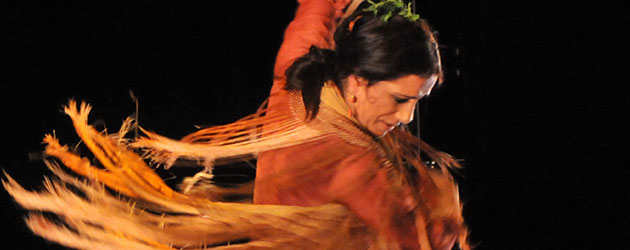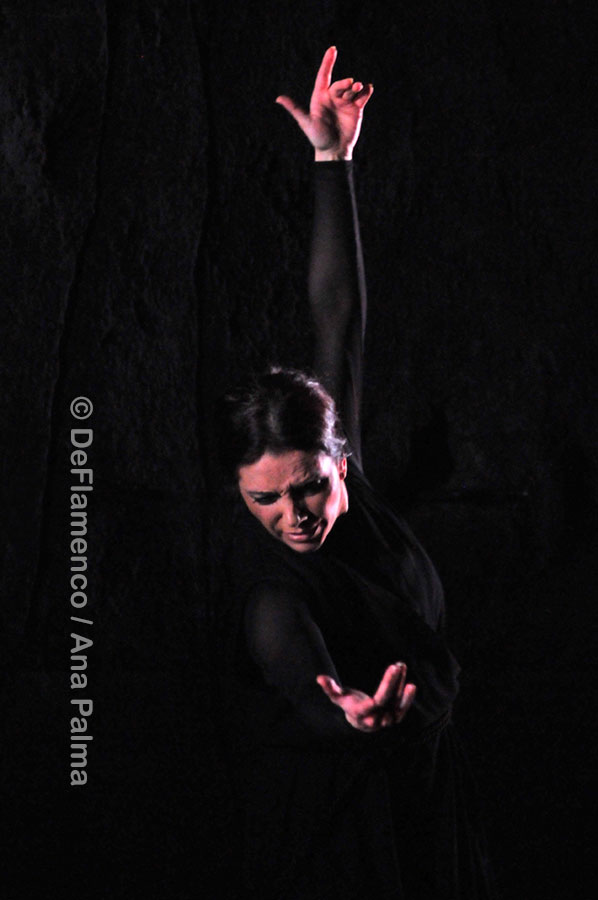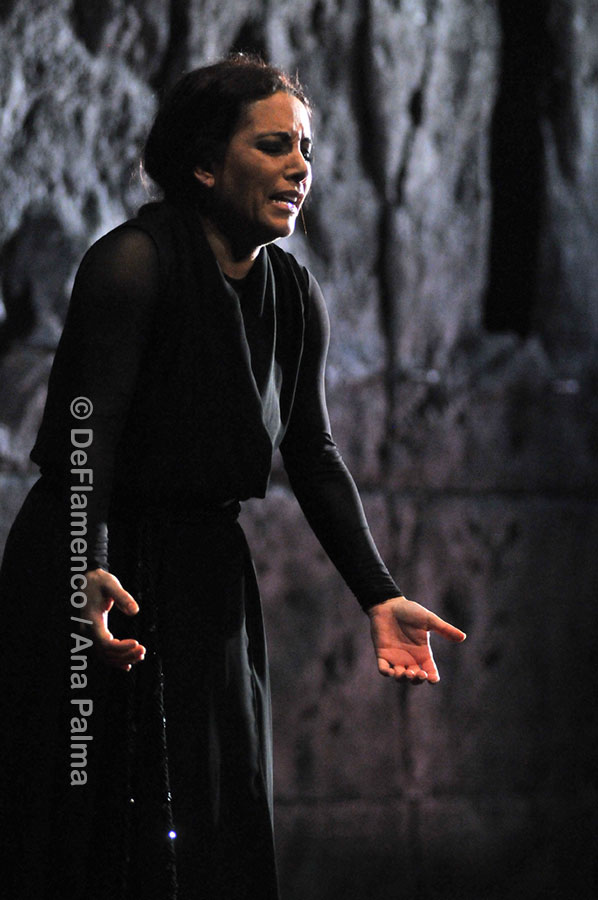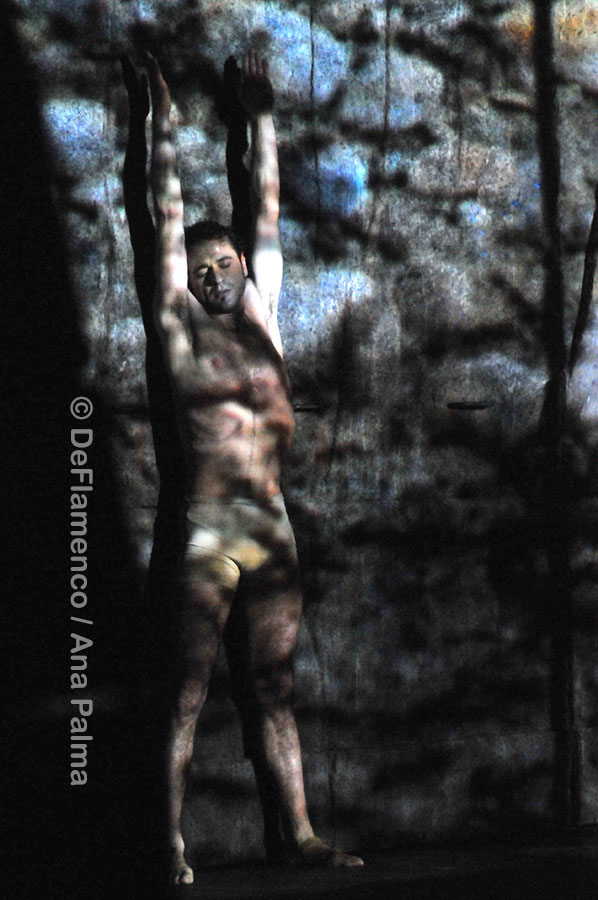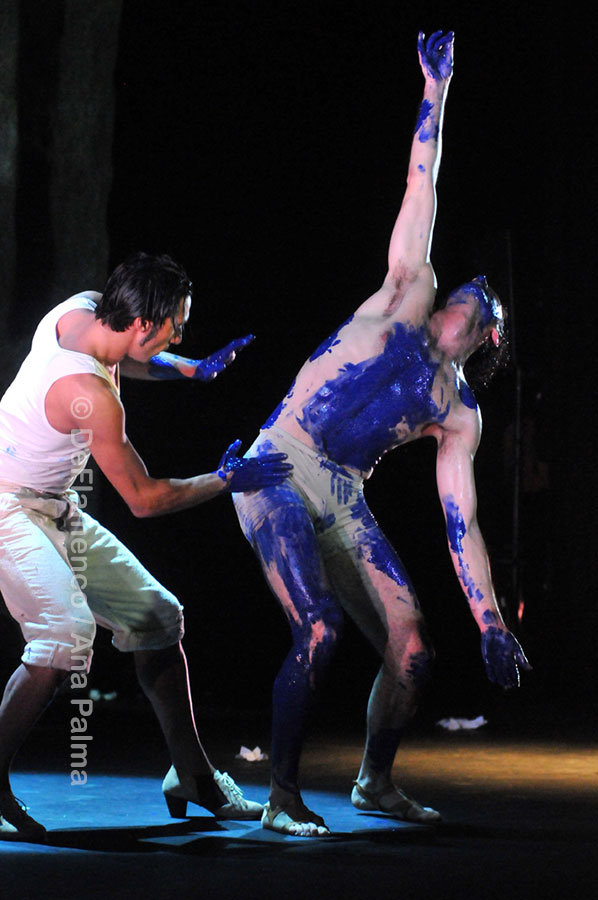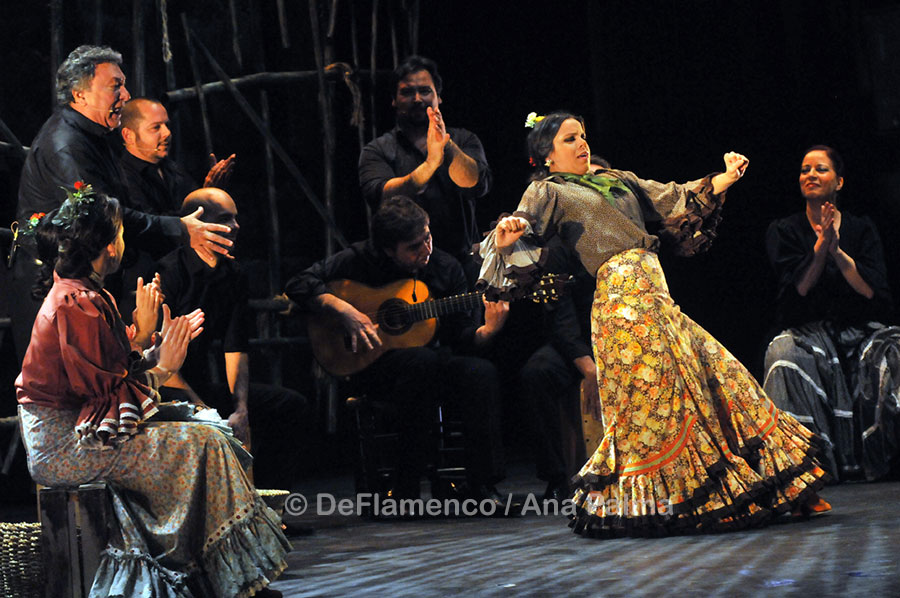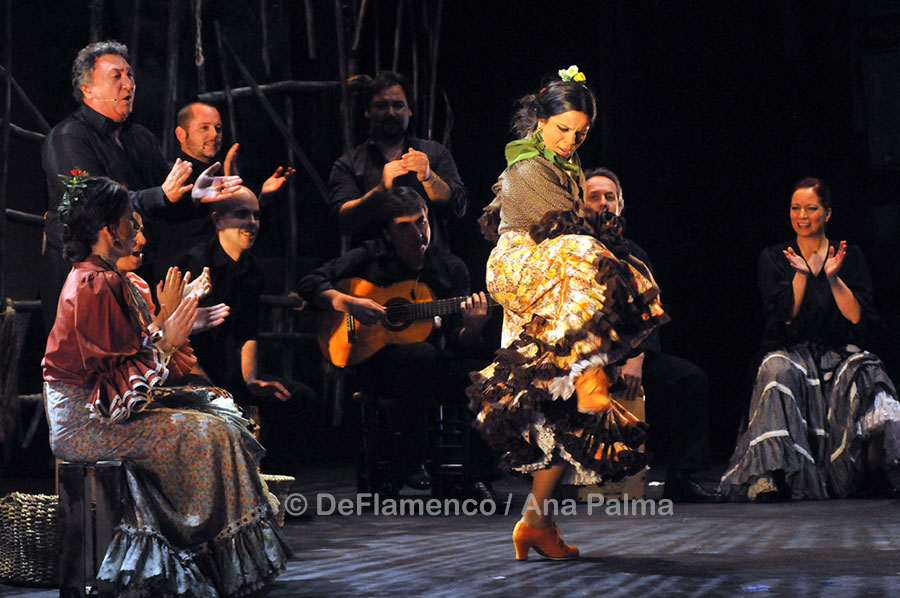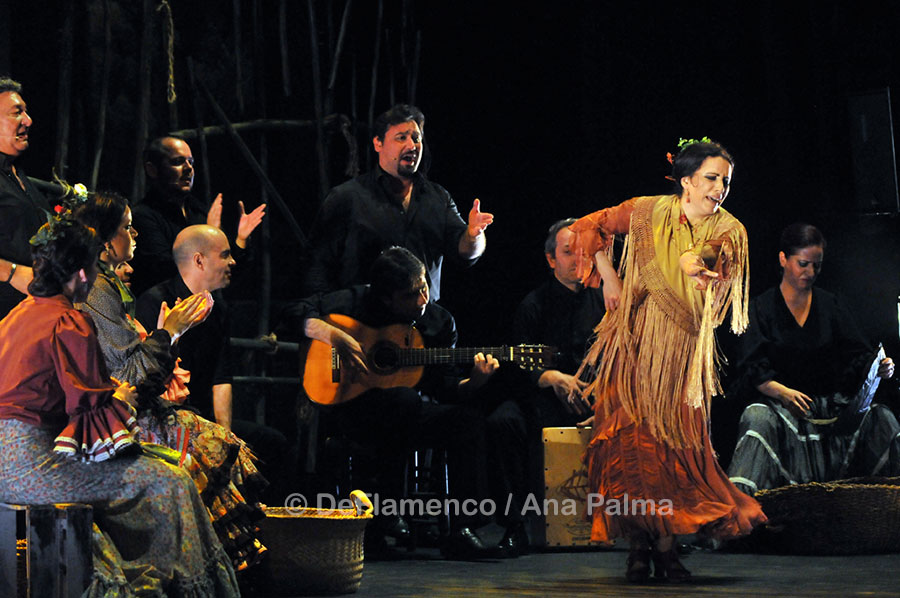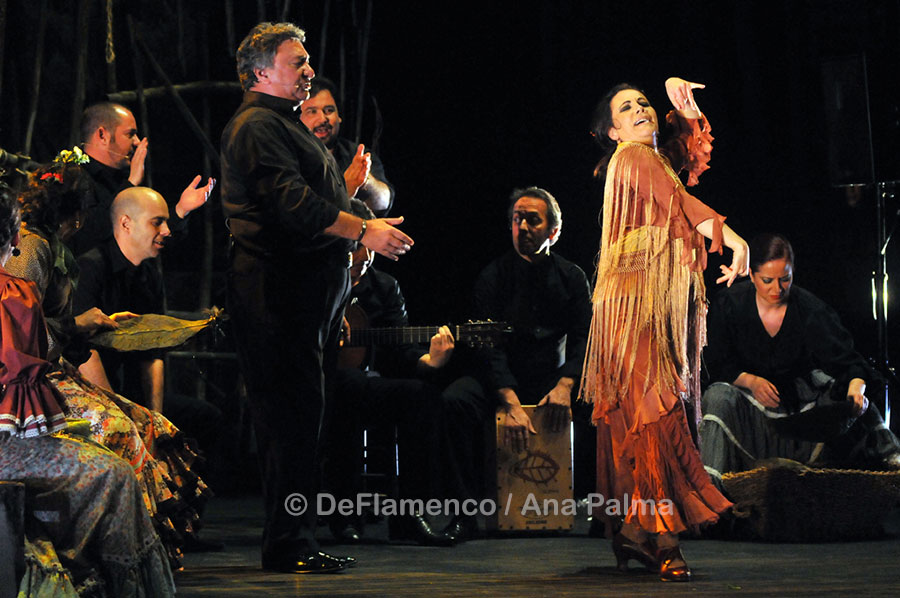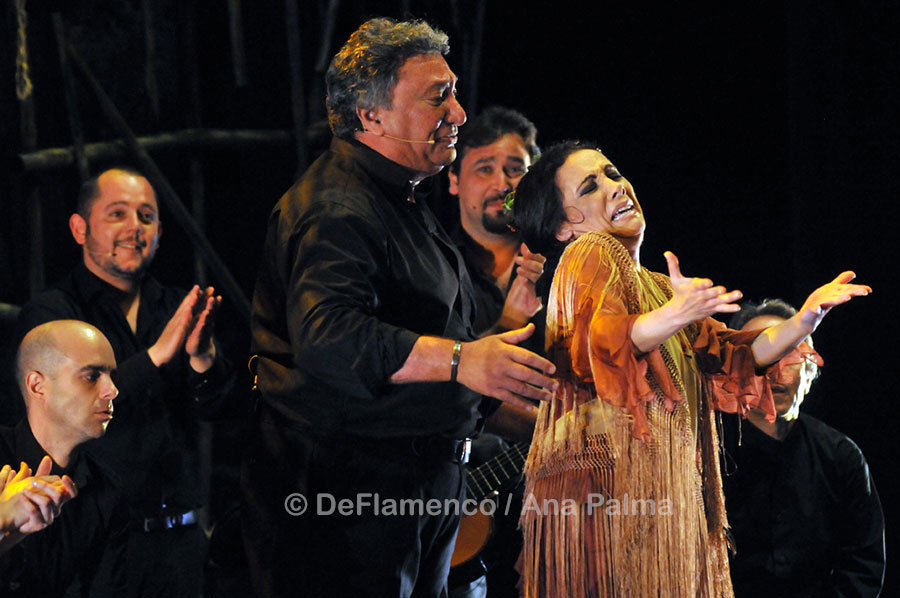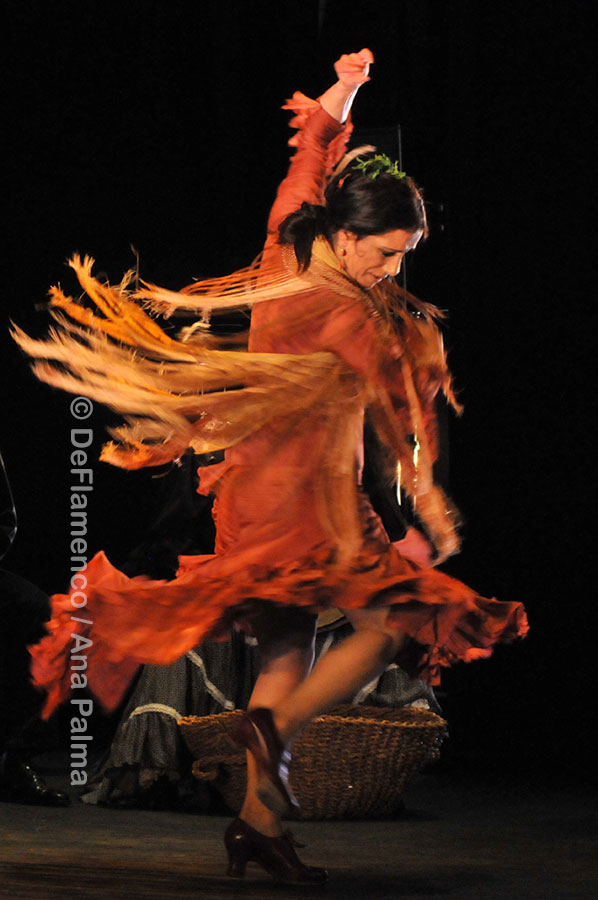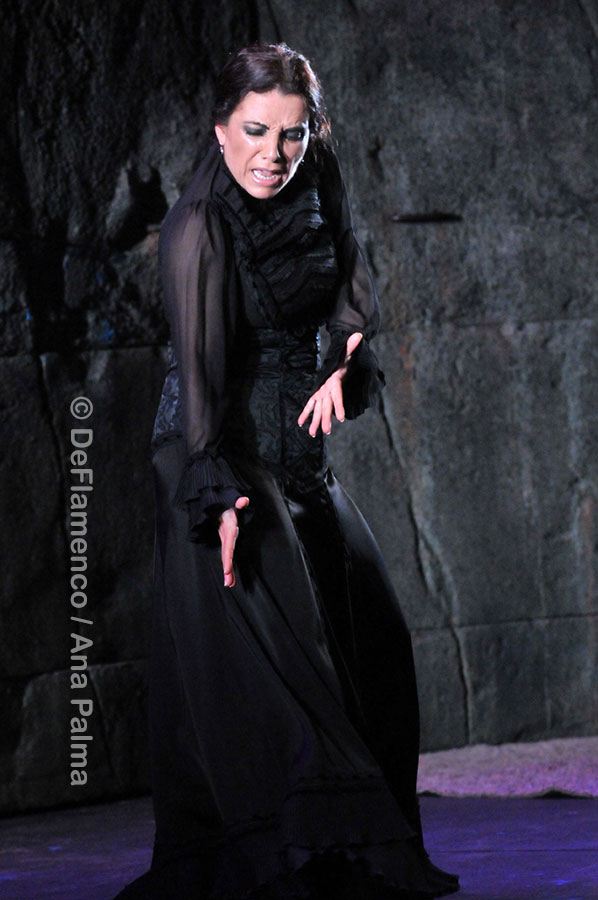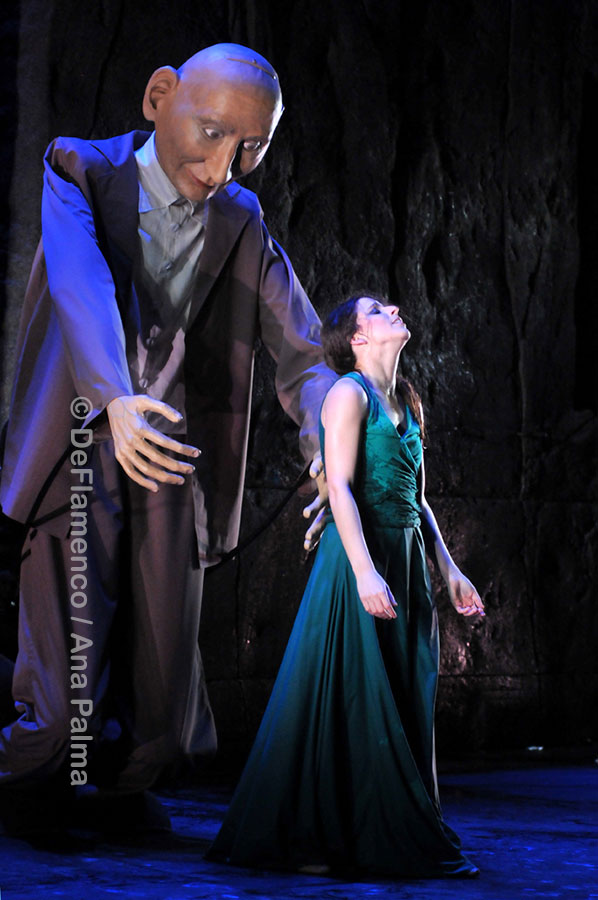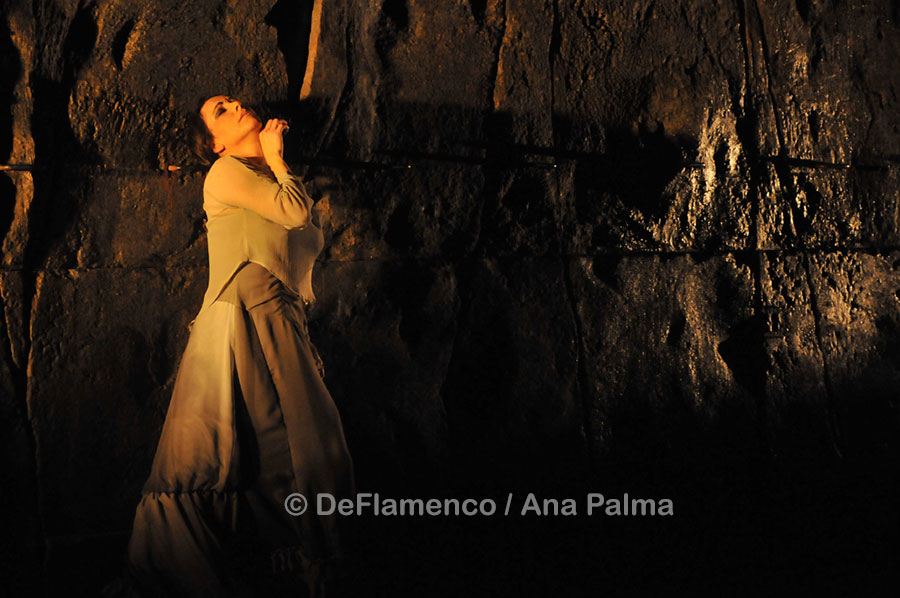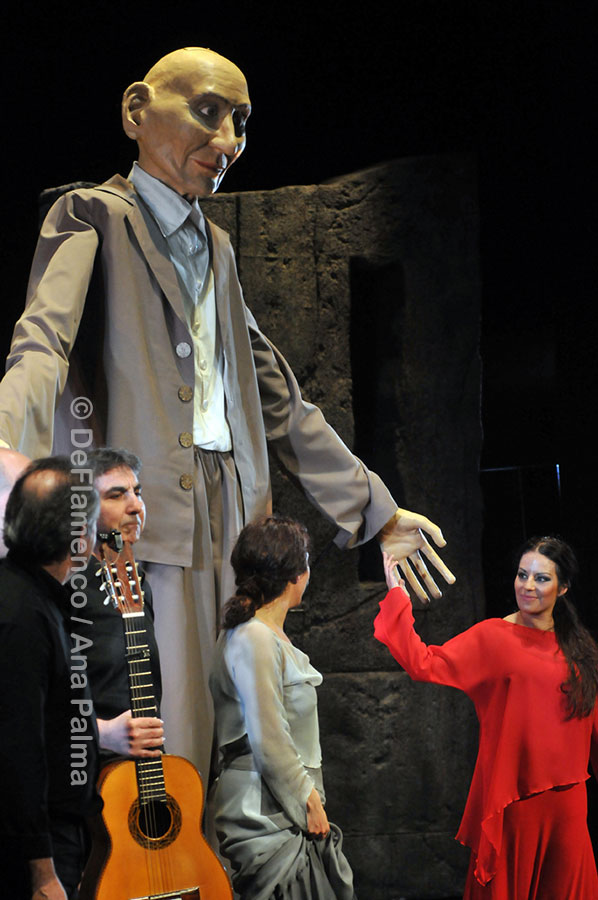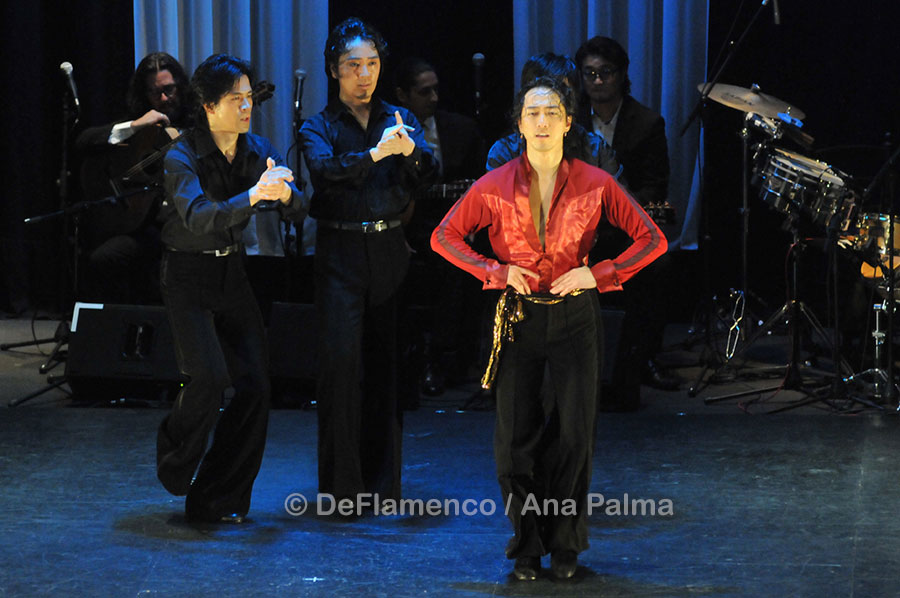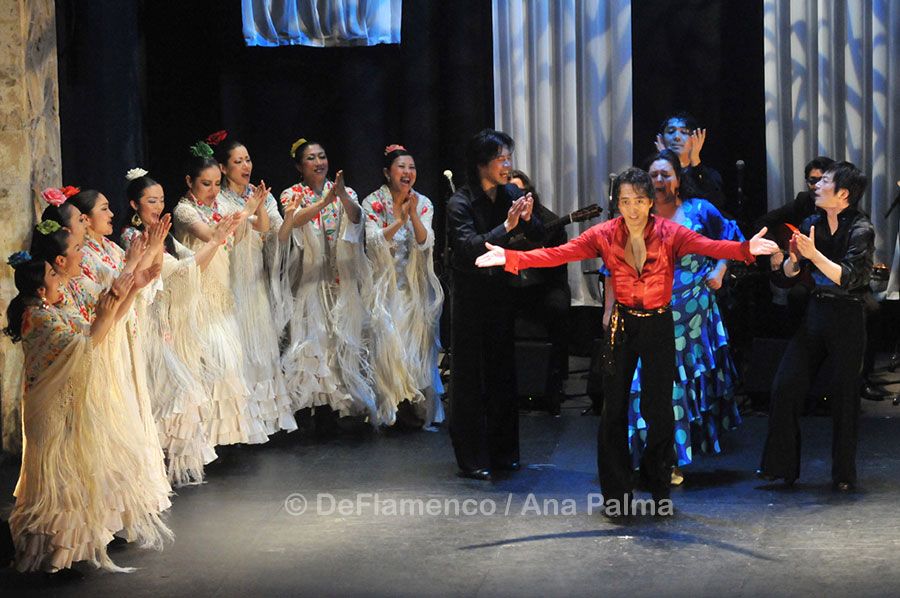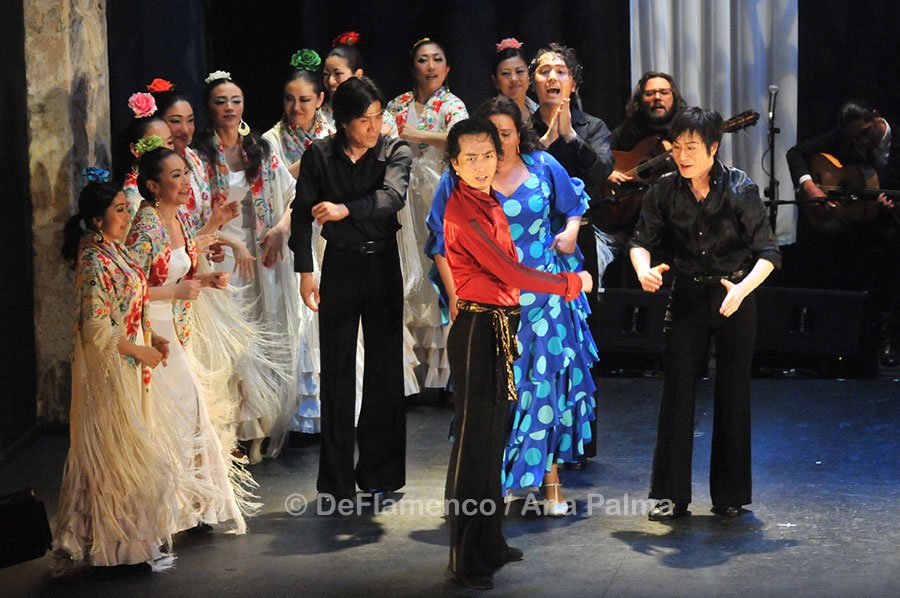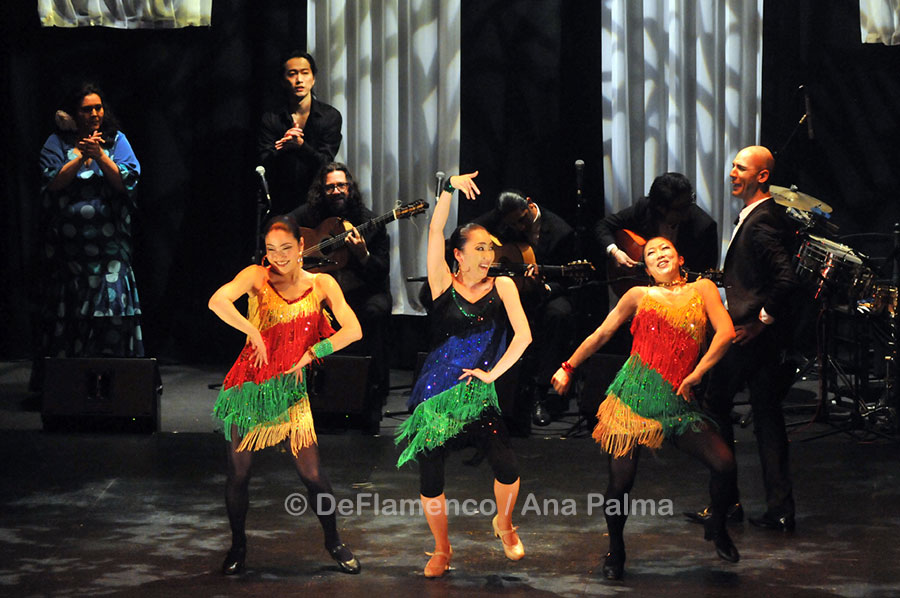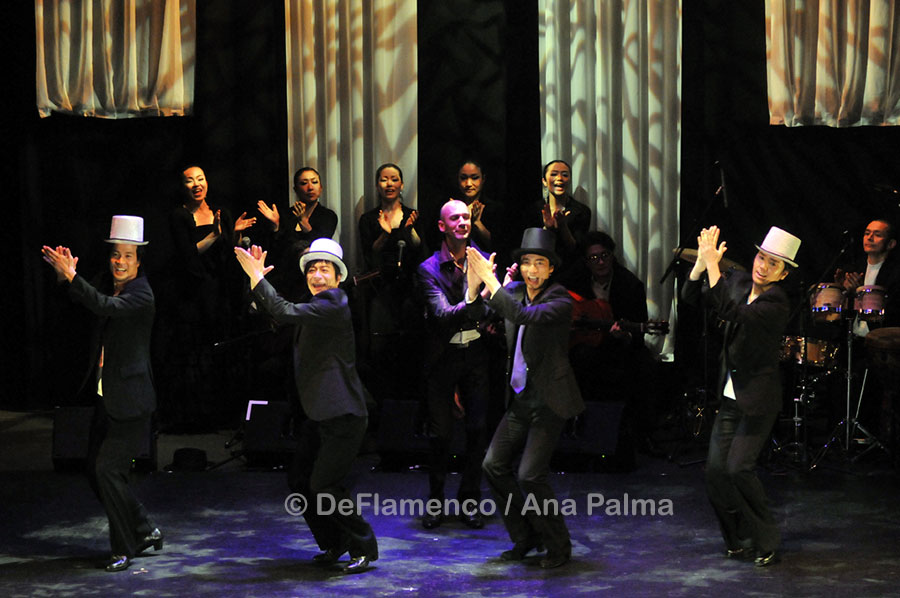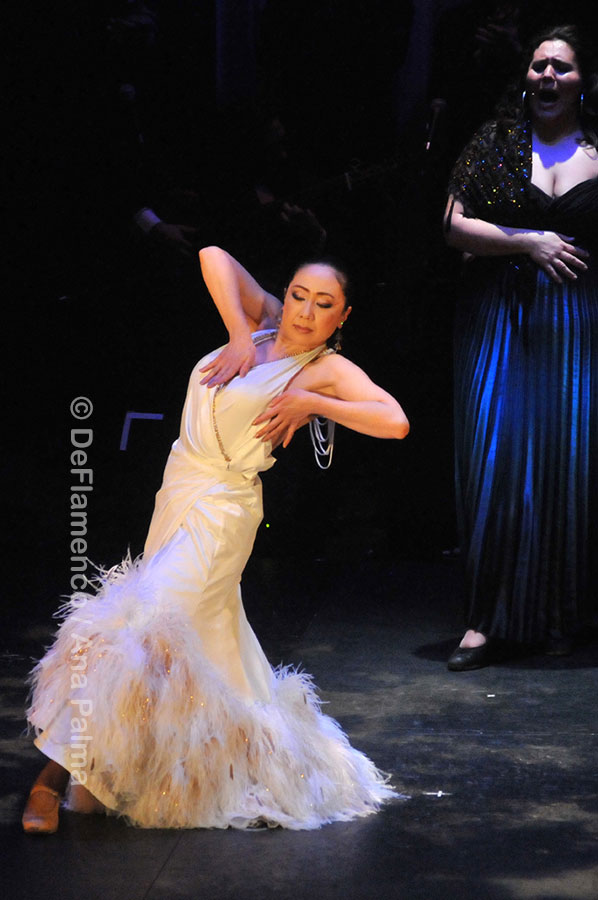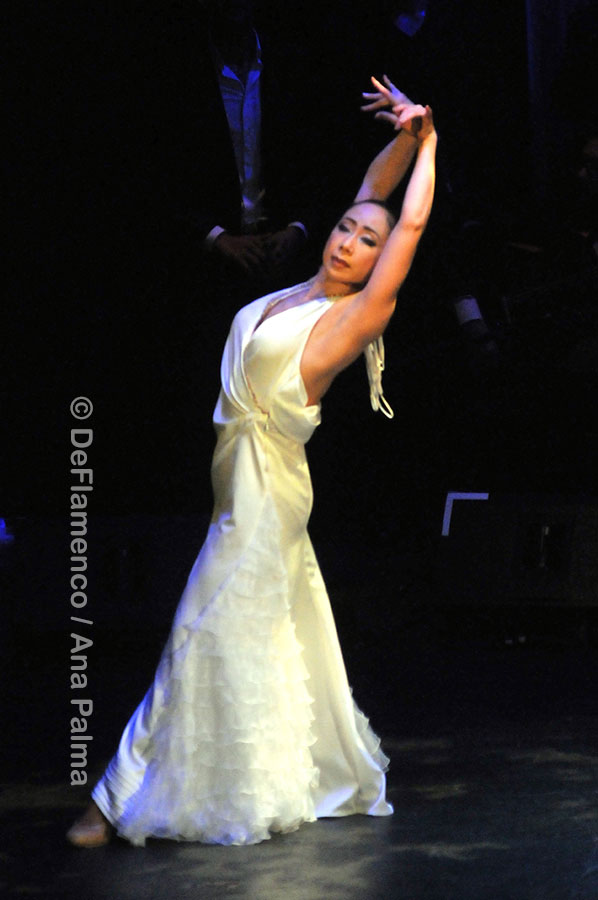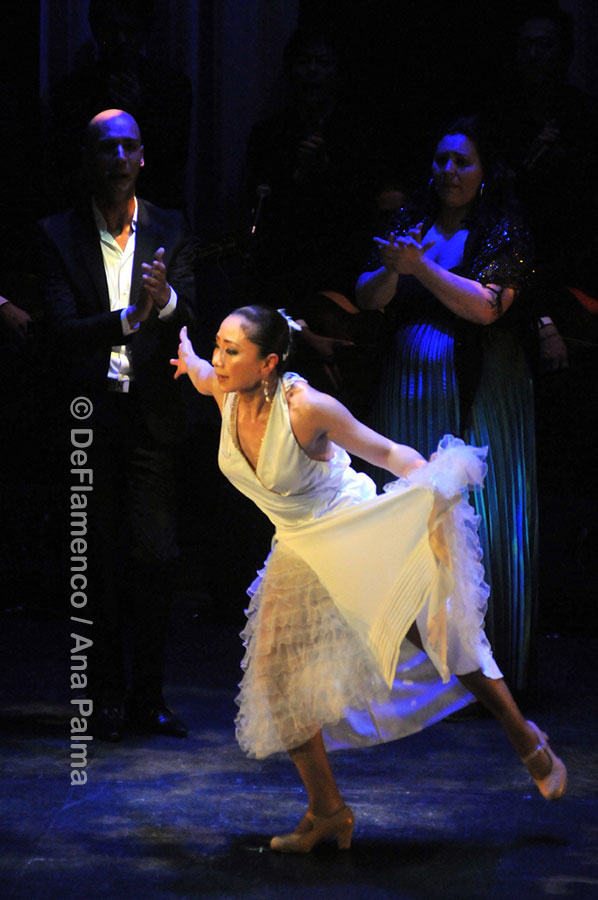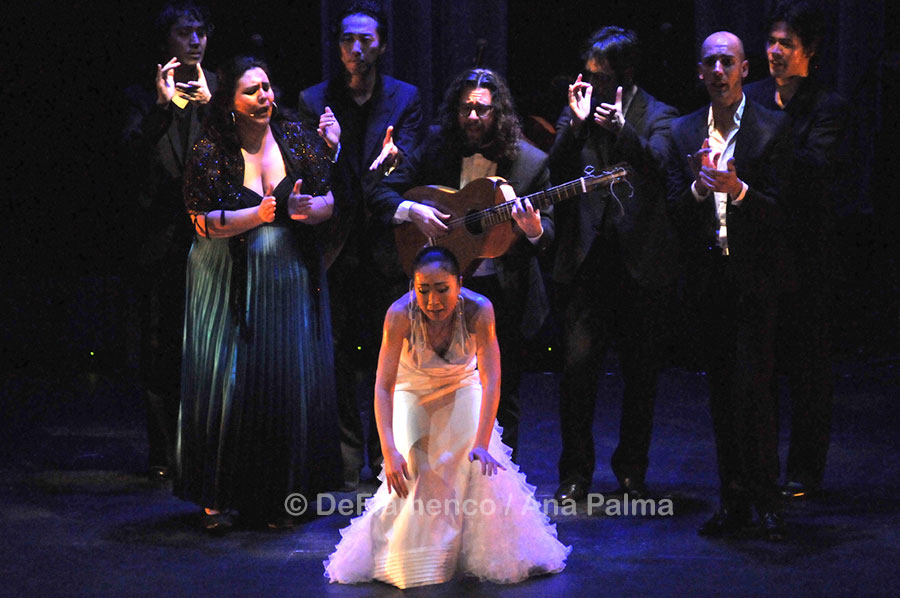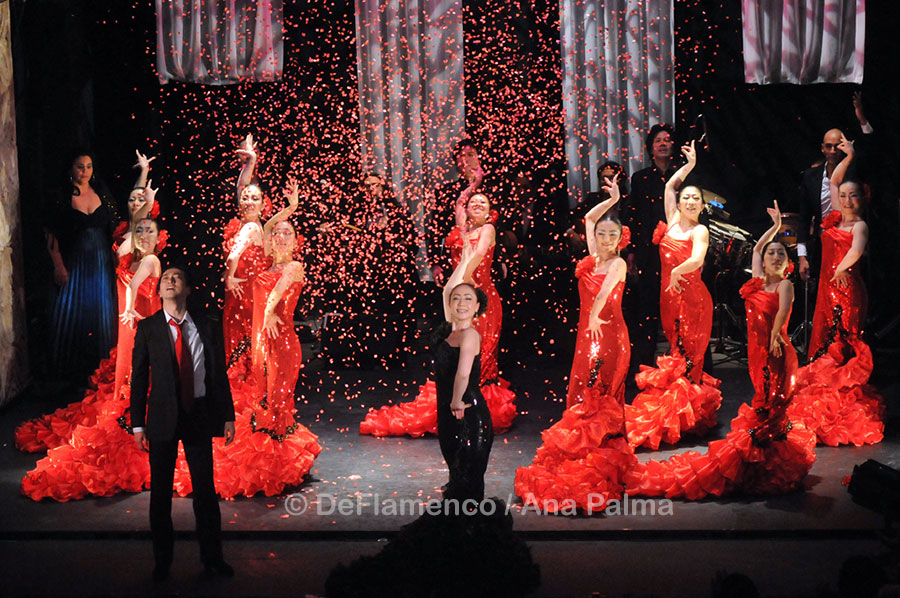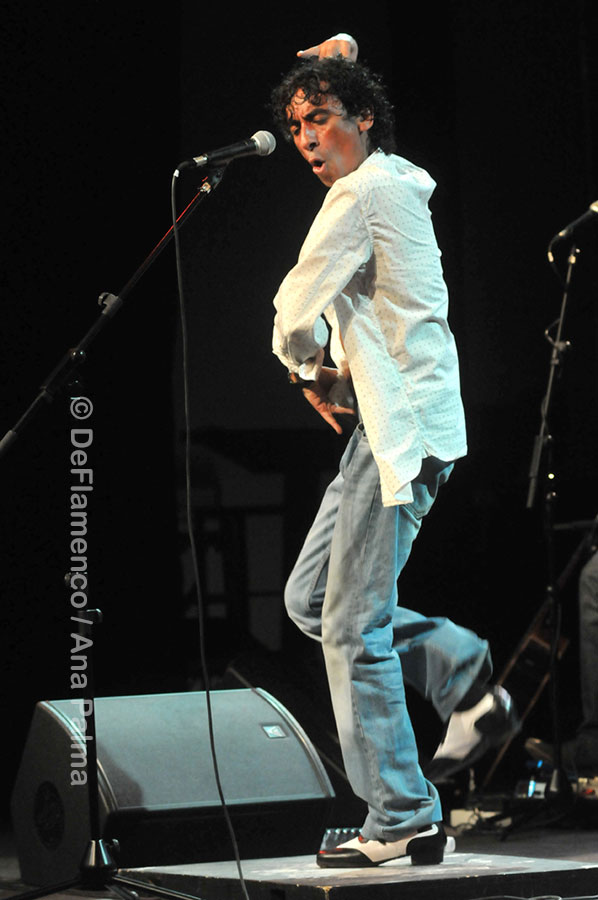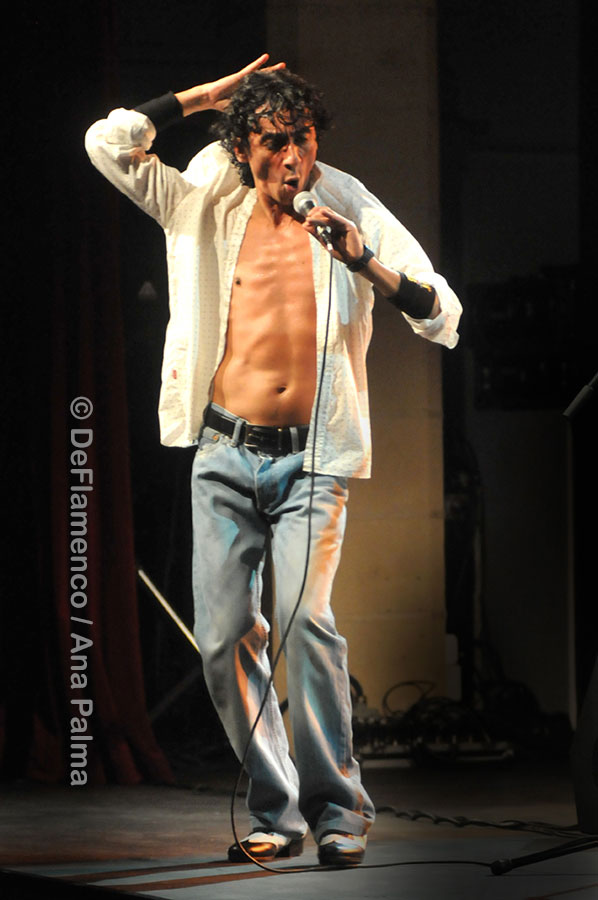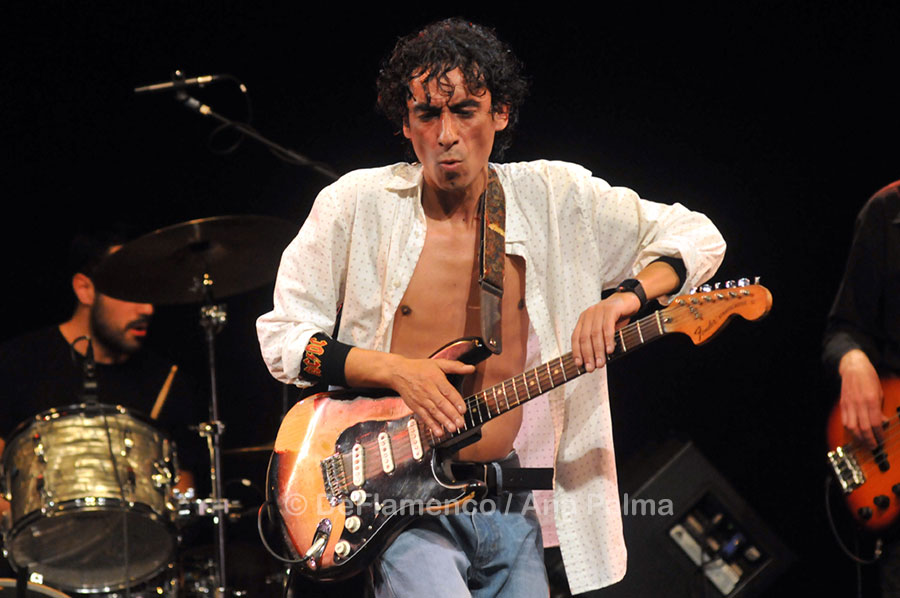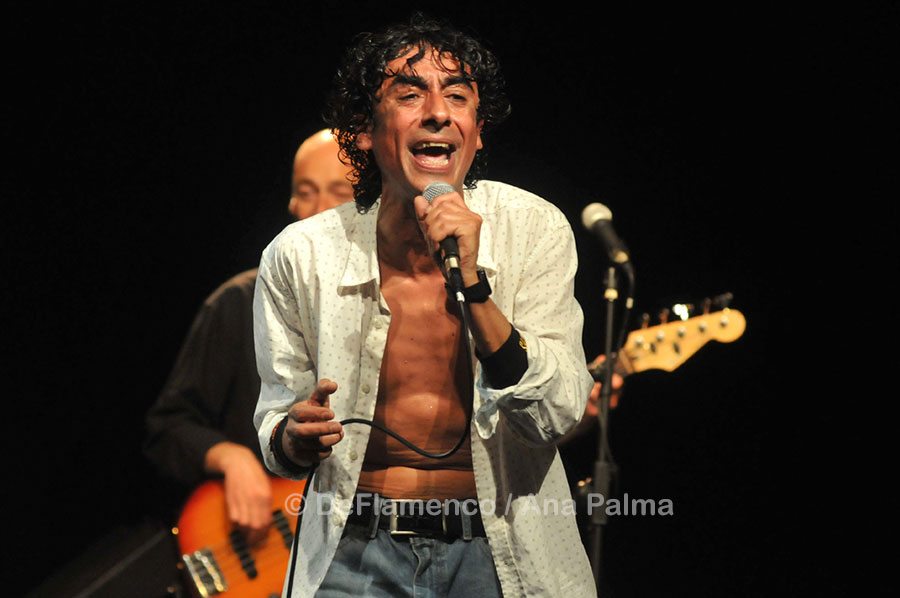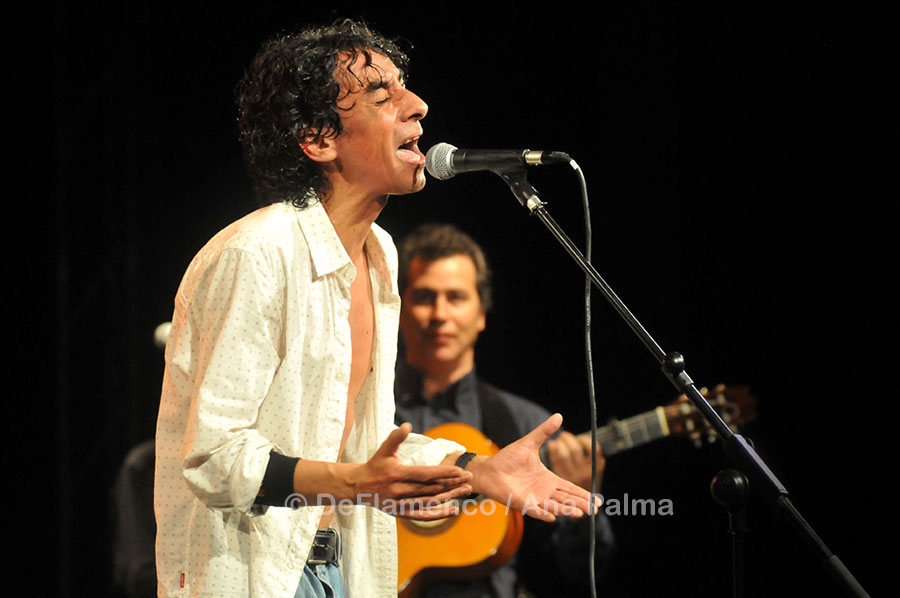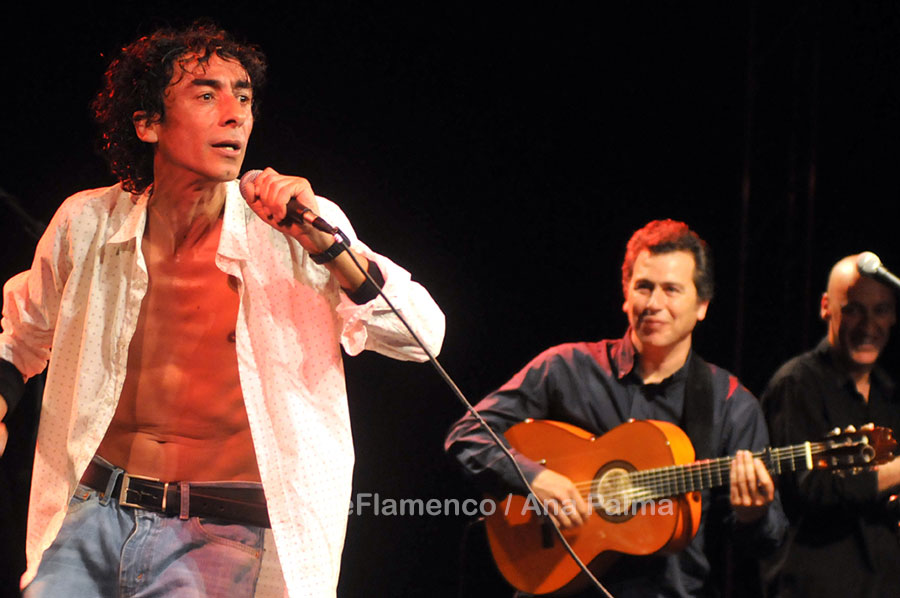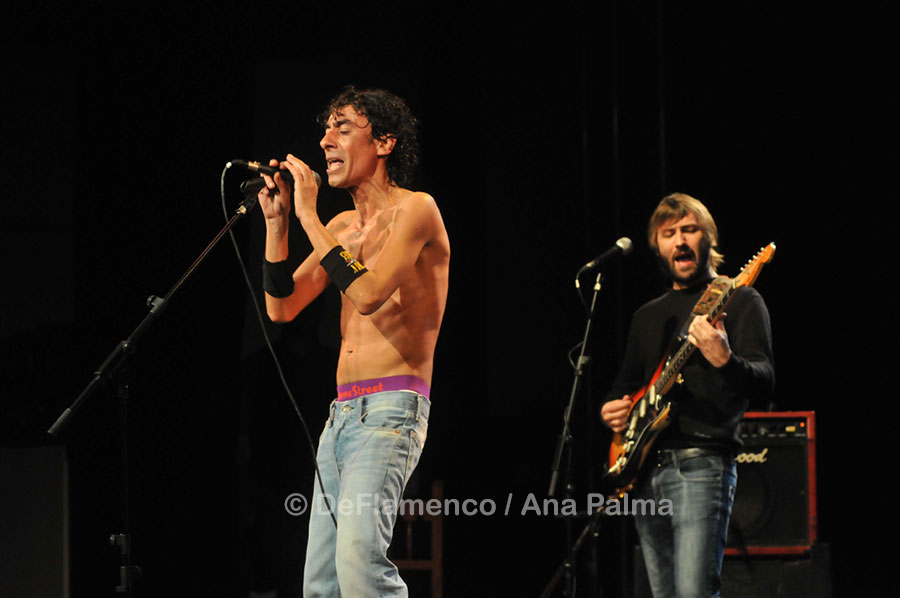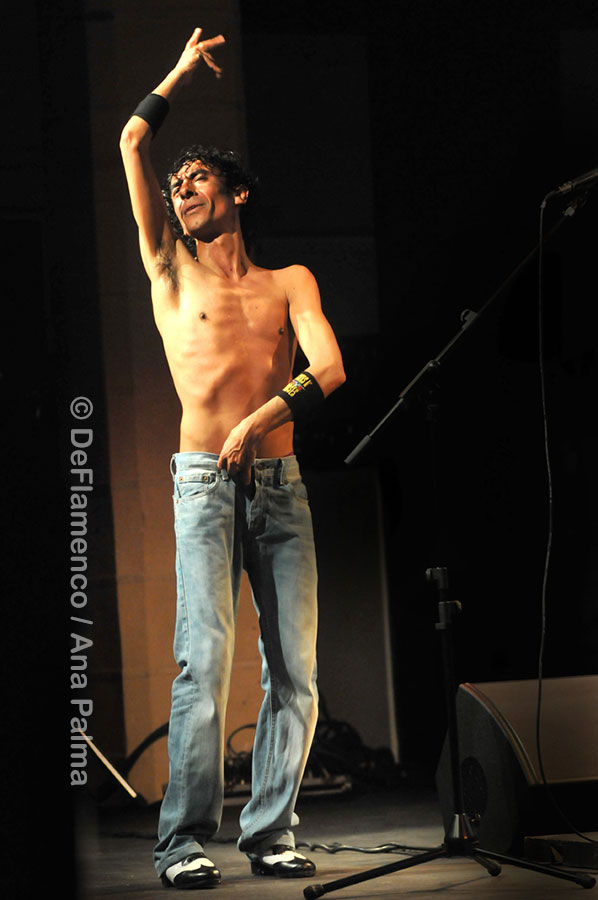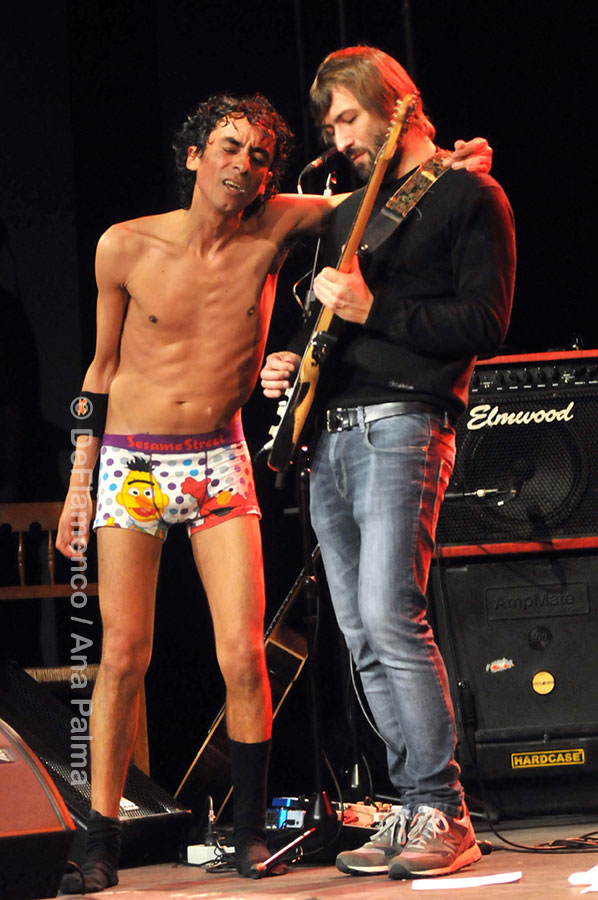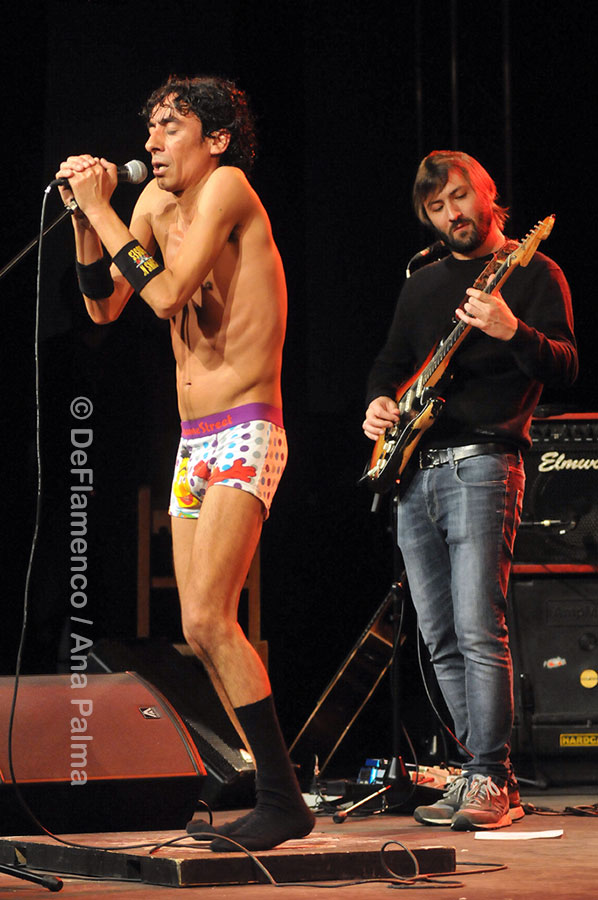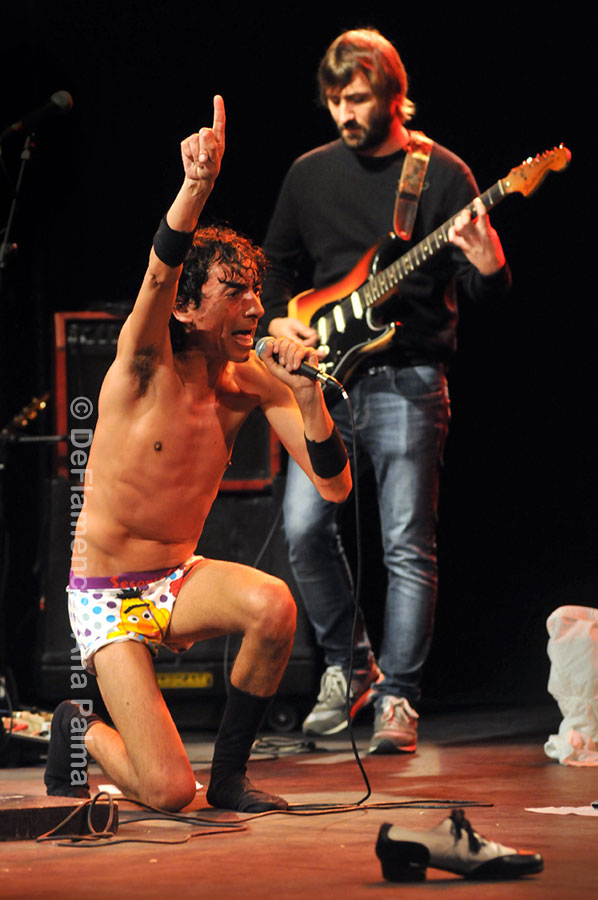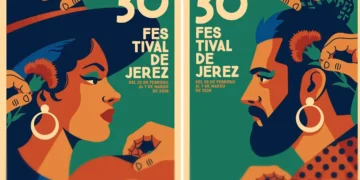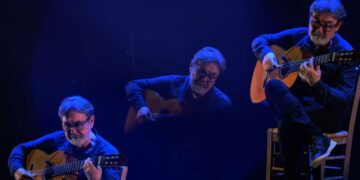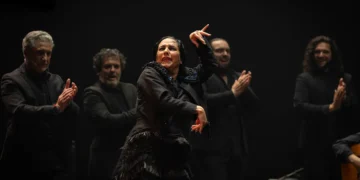Text: Estela Zatania
Photos: Ana Palma
Saturday, March 9th, 2013. Jerez de la Frontera
Special 17th Festival de Jerez – All the information
THE FESTIVAL DE JEREZ CLOSES OUT WITH EVA
And so it came to pass that the Festival de Jerez 2013 reached its natural conclusion. Upon arriving at the Villamarta theater last night, the dates of next year’s festival were projected on the backdrop: February 21st to March 8th, and at midday yesterday the mayoress had already described the present edition as a success, citing the nearly 35,000 spectators and participants from thirty-eight countries, stating that “this event has become one of Jerez’ main calling cards for the world”. She also said the festival has the power to make a visit to the city “unrepeatable”; one only hopes that was a slip of the tongue. One thing is for sure, the Festival de Jerez is one of the most consolidated events of this genre. She went on to mention the importance of the parallel activities, both independent and in conjunction with the Villamarta Foundation, the national premieres that were included in the program and the various holders of Spain’s National Dance Prize who participated.
For this closing day, a very varied program awaited us…
EVA YERBABUENA “FEDERICO SEGÚN LORCA”
Teatro Villamarta, 9.00pm
The great Eva Yerbabuena arrived at the Villamarta with her large company. Once her way of dancing flamenco gets into your head, it’s hard to settle for less. Her way of dancing flamenco that is. Because she has the custom of force-feeding us dark depressing scenes before opening the flamenco floodgates, and in “Federico Según Lorca” she remains faithful to that system. In a certain sense, every show she presents is yet another pretext for dancing her famous soleá with the famous slow-motion step that always triggers an ovation.
The thing is, any work related to the asphyxiating world of Lorca already lends itself to these difficult dramatizations right from the start, while at the same time they allow Eva to indulge in her never-ending fascination with classic contemporary dance (as opposed to modern contemporary dance). A dark sliding wall is the main set and seems to symbolize being enclosed and limited, the absence of spiritual freedom. Yerbabuena always looks for her identity along these paths wrapped in an invisible shroud of despair. There are exotic prayers and music, dancers in underwear, sticky blue paint which is applied to one of them as we watch, strange projected images…Eva’s shows are like group therapy sessions.
Then all of a sudden, flamenco, in the voices and personae of Enrique el Extremeño, José Valencia and Jeromo Segura, and you just want to jump out of your seat, run up on stage and hug them for coming. Eva also wakes up from her personal nightmare and dances some flamenco…there’s abandolao, tangos, bulerías…there’s vitality, and the audience reacts.
Then it’s back to conceptual dancing, but a little easier to take, and a dramatic scene of seduction followed by ostracism and punishment with buckets of water. And the unforgettable element, a giant articulated puppet, both unsettling and fun at the same time. And Eva dances serranas.
When the entire company comes on stage dressed in electric red, you know something bad went down, Lorca has again been martyred until the next reincarnation, and thus it all comes to an end except for the final bow where the giant acknowledges the applause like just another member of the company.
MIAYUMI KAGITA & HIROKI SATO “¡AMOR, AMOR, AMOR!”
Ciclo: Muy flamencos
Sala Compañía, 7.00pm
My fattest dictionary, the María Moliner, tells me “esperpento” is a “theatrical genre created by writer Valle-Inclán in which reality is systematically deformed through the exaggeration of its most grotesque and absurd characteristics”. In that sense, “¡Amor, Amor, Amor!” is esperpento.
For many years the Festival de Jerez has been receiving non-Spanish artists, especially from Japan, with affection and tolerance. One company that formerly appeared is that of Miayumi Kagita and Hiroki Sato, until now, with conventional projects of relative quality.
According to the libretto, the objective of “¡Amor, Amor, Amor!” is to pay tribute to “Rocío Jurado, Raphael, Lola Flores and Serrat”, but it ends up being more of a parody. And to parody, it is absolutely essential to know your material intimately. Only someone from Madrid can credibly represent people from Madrid, Cantinflas to represent Mexicans or Woody Allen to highlight New Yorkers, this is fundamental. Anyone attempting to side-step that guideline runs the serious risk of becoming the object of ridicule, or even being offensive without realizing it. These oriental interpreters fell precisely into this pitfall, despite the best of intentions. They chose to recreate Spanish cultural icons putting aside the language of flamenco which is what they know best, and it all became an exaggerated burlesque of pasodobles, rumba catalana with bongo drums, a deliberately out-dated wardrobe and truckloads of sequins, like a kind of oriental Bollywood aesthetic.
In the end, we don’t know who was making fun of whom. The versatile José Gálvez who put the music and vocals, is well-prepared to pull off this kind of tribute to Spanish popular music in the flamenco vein, as are the singers Fernando Soto and Ana de los Reyes who also provided atmosphere. But the people in charge of directing and choreographing the show, no matter how much they may enjoy this kind of music, lacked sufficient cultural underpinnings. Without adequate counseling and advice, the mish-mosh of crossed cultural signals and references yielded, not the theater genre created by the venerable Valle-Inclán, nor the intended tribute, but rather an unfortunate mistake.
“TOMASITO EN ESTADO PURO”
Sala Paúl, 12 midnight
The mischievous multi-talented Tomás Moreno Romero, “Tomasito” had the honor of closing out the official program of the Festival de Jerez 2012 at the Sala Paúl. If Diego Carrasco is the Tom Waits (Little Richard? Jerry Lee Lewis?) of flamenco, Tomasito is our Michael Jackson (Mick Jagger? Prince?). The eternal adolescent makes his flamenco rock creations seem like juvenile pranks of little consequence, but he is neither adolescent (he’s over forty), nor can anyone ignore his boundless creativity based on the flamenco from his Santiago neighborhood, and his inner chronometer that deals with compás at the molecular level.

And throughout the city there was still plenty of flamenco at numerous small venues, most notably Juan “El Torta” who drew a lot of people, in addition to various recitals and shows at small taverns and pubs…not even the rainy weather could put a damper on the fiesta called “Festival de Jerez”.
Descubre más desde Revista DeFlamenco.com
Suscríbete y recibe las últimas entradas en tu correo electrónico.


